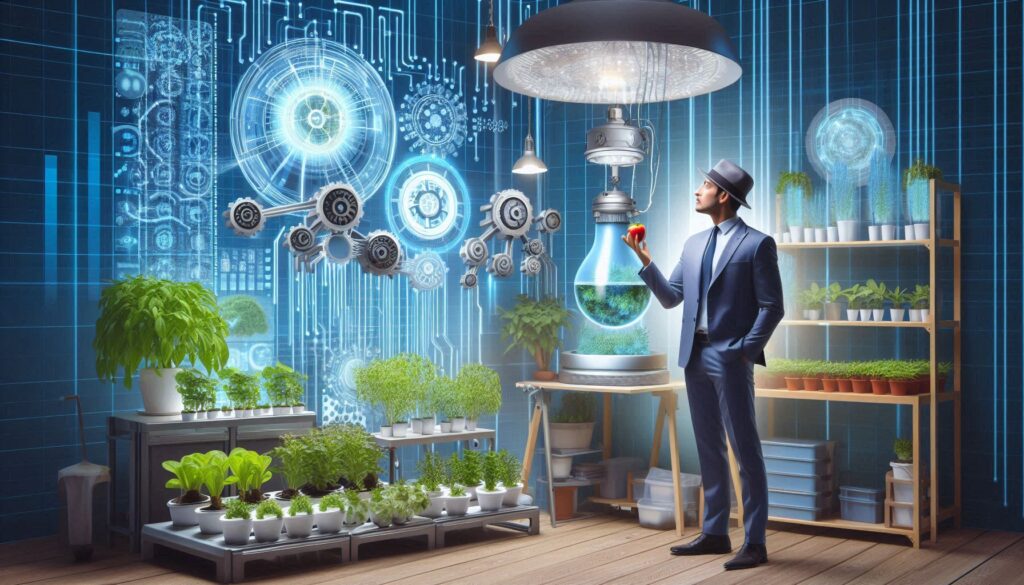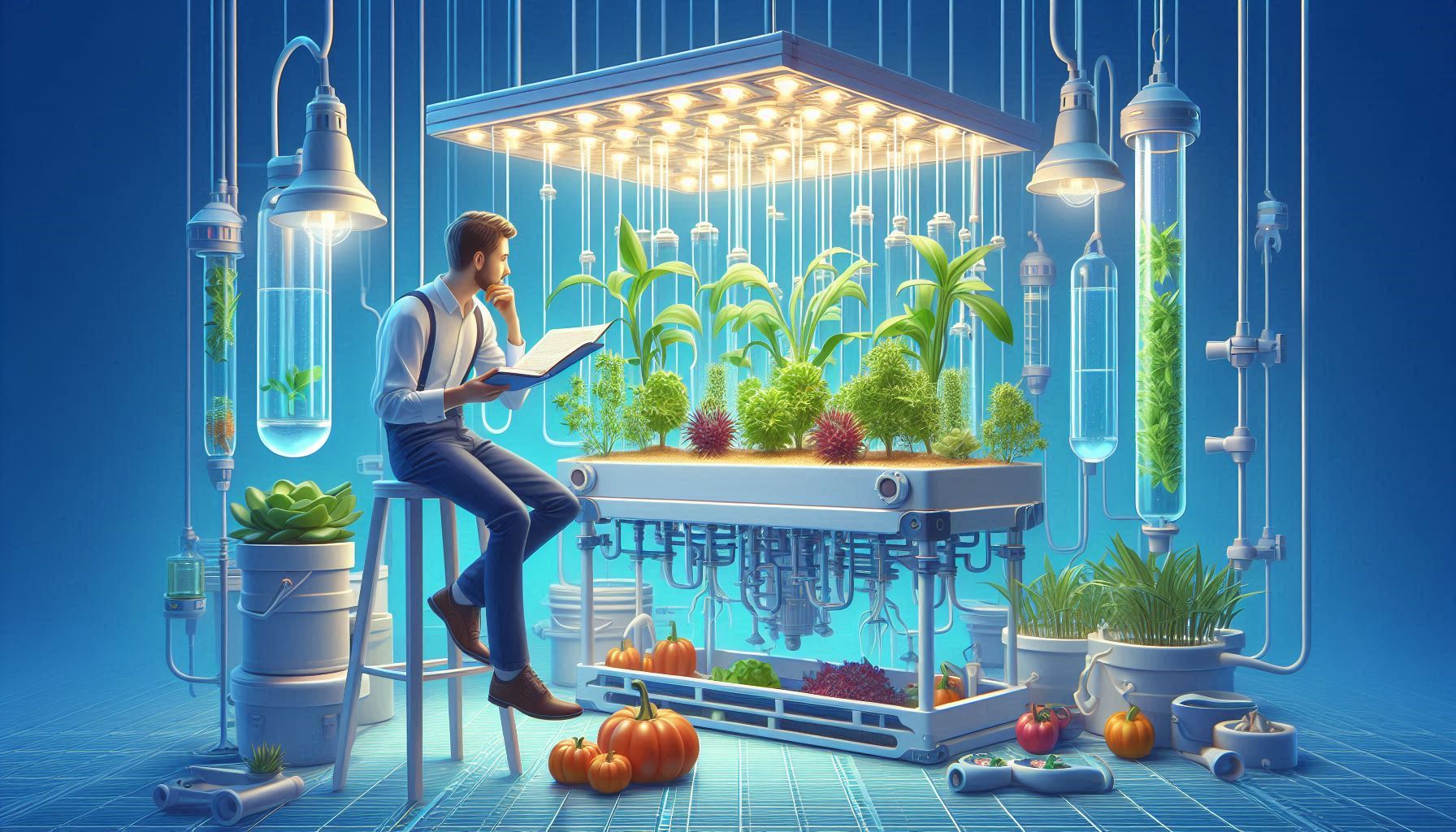Hydroponic gardening has gained popularity in recent years due to its efficiency, sustainability, and flexibility in growing various crops. One of the key decisions when starting a hydroponic garden is choosing the right type of hydroponic system. With a variety of systems available, each offering unique advantages and considerations, it’s essential to understand the differences between them to make an informed choice. This comprehensive guide explores different types of hydroponic systems, their characteristics, pros and cons, and provides insights on how to choose the most suitable system for your hydroponic gardening needs.
Chapter 1: Nutrient Film Technique (NFT) System
The Nutrient Film Technique (NFT) system is a popular hydroponic system that involves a continuous flow of nutrient solution over plant roots housed in a narrow channel. This system provides a constant supply of nutrients and oxygen to the roots, promoting healthy plant growth.
Pros and Cons
- Pros:
- Water and nutrient-efficient
- Suitable for growing leafy greens and herbs
- Requires minimal growing medium
- Cons:
- Prone to clogging
- Challenging to maintain water flow
- Not ideal for heavier fruiting crops
Chapter 2: Deep Water Culture (DWC) System
The Deep Water Culture (DWC) system is a simple hydroponic setup where plant roots are submerged in a nutrient solution in a reservoir. An air pump provides oxygen to the roots, creating a highly oxygenated environment for plant growth.
Pros and Cons
- Pros:
- Easy to set up and maintain
- Ideal for growing lettuce and herbs
- Cost-effective system
- Cons:
- Limited support for larger plants
- Risk of root rot if oxygenation is inadequate
- Requires monitoring of nutrient levels regularly
Chapter 3: Ebb and Flow (Flood and Drain) System

The Ebb and Flow system, also known as the Flood and Drain system, involves flooding the plant roots with a nutrient solution at regular intervals before draining it back into a reservoir. This cyclic watering ensures sufficient nutrients and oxygen reach the roots.
Pros and Cons
- Pros:
- Versatile system for a wide range of crops
- Easy to automate
- Provides good aeration to roots
- Cons:
- Risk of pump failure leading to root flooding
- Requires attention to nutrient levels and pH
- Not ideal for continuous water-sensitive crops
Chapter 4: Drip System
The Drip system delivers a nutrient solution directly to plant roots via a network of drip emitters. This system allows for precise control over nutrient delivery and is suitable for a variety of crop types.
Pros and Cons
- Pros:
- Efficient nutrient delivery
- Versatile for different plant sizes and types
- Easy to customize and expand
- Cons:
- Prone to clogging
- Requires monitoring of drip emitter performance
- Higher water usage compared to other systems
Aeroponic System
The Aeroponic system suspends plant roots in the air and mists them with a nutrient solution at regular intervals. This system promotes optimal oxygenation and nutrient absorption, leading to fast plant growth.
Pros and Cons
- Pros:
- Rapid plant growth and high yields
- Excellent oxygenation for root health
- Efficient nutrient absorption
- Cons:
- Higher initial setup costs
- Sensitive to power outages
- Requires regular maintenance of misting components
Chapter 6: Wick System
The Wick system is a passive hydroponic system where a wick delivers a nutrient solution from a reservoir to the plant roots. This simple system is suitable for beginners and low-maintenance crops.
Pros and Cons
- Pros:
- Easy and low-cost setup
- Ideal for small-scale gardening
- Low maintenance requirements
- Cons:
- Limited to small plants and herbs
- Slow nutrient delivery compared to active systems
- Not suitable for larger or demanding crops
Chapter 7: Choosing the Right Hydroponic System
Consider Your Space and Resources
Before selecting a hydroponic system, consider the available space, budget, and resources. Some systems may require more space or initial investment, while others are more compact and cost-effective.
Assess Your Crop Selection
Different hydroponic systems are suitable for specific types of crops. Consider the plants you want to grow and their requirements, such as root space, nutrient levels, and water needs, when choosing a system.
Evaluate Maintenance Requirements
Each hydroponic system has unique maintenance requirements, from monitoring nutrient levels to cleaning components. Choose a system that aligns with your schedule and level of commitment to ensure successful plant growth.
Determine Automation Needs
Some hydroponic systems can be automated with timers and sensors for nutrient delivery, lighting, and ventilation. If you prefer a hands-off approach, consider systems that offer automation features for convenience.
Seek Advice and Resources
Consult with experienced hydroponic gardeners, attend workshops, and explore online resources to gain insights on different hydroponic systems and their practical applications. Learning from others’ experiences can help you make an informed decision.
Choosing the right hydroponic system is a crucial step in establishing a successful indoor garden. By understanding the characteristics, pros and cons of various hydroponic systems, and considering factors such as space, crop selection, maintenance requirements, and automation needs, you can select a system that aligns with your goals and preferences. Whether you opt for a NFT, DWC, Ebb and Flow, Drip, Aeroponic, Wick, or another hydroponic system, proper planning and research will set the foundation for a thriving hydroponic garden that yields bountiful crops year-round.

